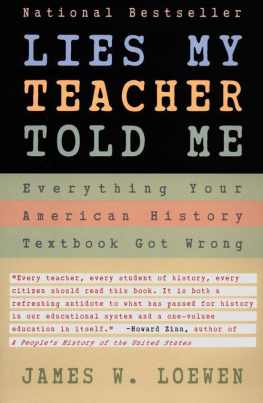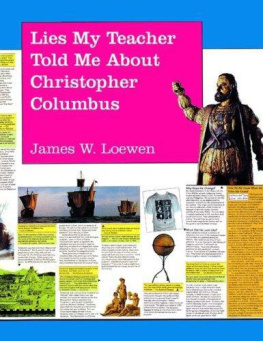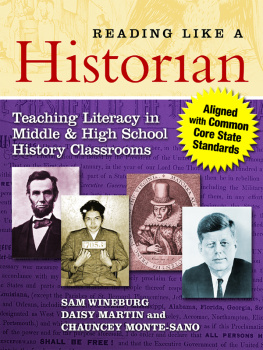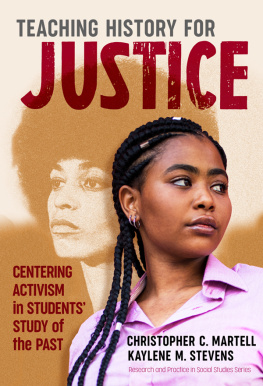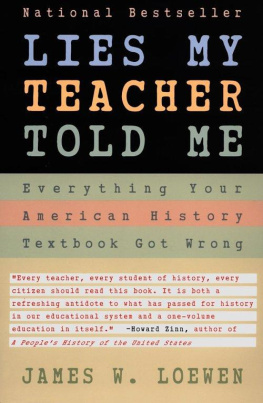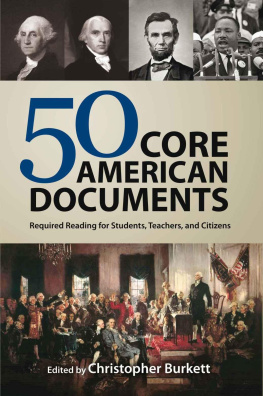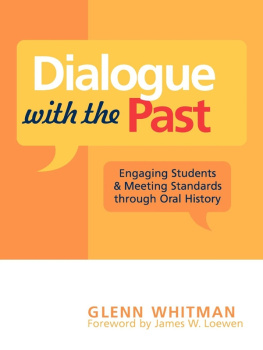MULTICULTURAL EDUCATION SERIES
James A. Banks, Series Editor

Teaching What Really Happened: How to Avoid the Tyranny of Textbooks and Get Students Excited About Doing History
J AMES W. L OEWEN
Diversity and the New Teacher: Learning from Experience in Urban Schools
C ATHERINE C ORNBLETH
Frogs into Princes: Writings on School Reform
L ARRY C UBAN
Educating Citizens in a Multicultural Society, S ECOND E DITION
J AMES A. B ANKS
Culture, Literacy, and Learning: Taking Bloom in the Midst of the Whirlwind
C AROL D. L EE
Facing Accountability in Education: Democracy and Equity at Risk
C HRISTINE E. S LEETER , E D .
Talkin Black Talk: Language, Education, and Social Change
H. S AMY A LIM AND J OHN B AUGH , E DS .
Improving Access to Mathematics: Diversity and Equity in the Classroom
N AILAH S UAD N ASIR AND P AUL C OBB , E DS .
To Remain an Indian: Lessons in Democracy from a Century of Native American Education
K. T SIANINA L OMAWAIMA AND T ERESA L. M C C ARTY
Education Research in the Public Interest: Social Justice, Action, and Policy
G LORIA L ADSON -B ILLINGS AND W ILLIAM F. T ATE , E DS .
Multicultural Strategies for Education and Social Change: Carriers of the Torch in the United States and South Africa
A RNETHA F. B ALL
We Cant Teach What We Dont Know: White Teachers, Multiracial Schools, S ECOND E DITION
G ARY R. H OWARD
Un-Standardizing Curriculum: Multicultural Teaching in the Standards-Based Classroom
C HRISTINE E. S LEETER
Beyond the Big House: African American Educators on Teacher Education
G LORIA L ADSON -B ILLINGS
Teaching and Learning in Two Languages: Bilingualism and Schooling in the United States
E UGENE E. G ARCA
Improving Multicultural Education: Lessons from the Intergroup Education Movement
C HERRY A. M C G EE B ANKS
Education Programs for Improving Inter group Relations: Theory, Research, and Practice
W ALTER G. S TEPHAN AND W. P AUL V OGT , E DS .
Walking the Road: Race, Diversity, and Social Justice in Teacher Education
M ARILYN C OCHRAN -S MITH
City Schools and the American Dream: Reclaiming the Promise of Public Education
P EDRO A. N OGUERA
Thriving in the Multicultural Classroom: Principles and Practices for Effective Teaching
M ARY D ILG
Educating Teachers for Diversity: Seeing with a Cultural Eye
J ACQUELINE J ORDAN I RVINE
Teaching Democracy: Unity and Diversity in Public Life
W ALTER C. P ARKER
The Makingand Remakingof a Multiculturalist
C ARLOS E. C ORTS
Transforming the Multicultural Education of Teachers: Theory, Research, and Practice
M ICHAEL V AVRUS
Learning to Teach for Social Justice
L INDA D ARLING -H AMMOND , J ENNIFER F RENCH , AND S ILVIA P ALOMA G ARCIA -L OPEZ , E DS .
Culture, Difference, and Power
C HRISTINE E. S LEETER
Learning and Not Learning English: Latino Students in American Schools
G UADALUPE V ALDS
Culturally Responsive Teaching: Theory, Research, and Practice
G ENEVA G AY
The Children Are Watching: How the Media Teach About Diversity
C ARLOS E. C ORTS
Race and Culture in the Classroom: Teaching and Learning Through Multicultural Education
M ARY D ILG
The Light in Their Eyes: Creating Multicultural Learning Communities
S ONIA N IETO
Reducing Prejudice and Stereotyping in Schools
W ALTER S TEPHAN
Multicultural Education, Transformative Knowledge, and Action: Historical and Contemporary Perspectives
J AMES A. B ANKS , E D .
Teaching What Really Happened

How to Avoid the Tyranny of Textbooks and Get Students Excited About Doing History

JAMES W. LOEWEN

Teachers College, Columbia University
New York and London
Illustration Credits :
Published by Teachers College Press, 1234 Amsterdam Avenue, New York, NY 10027
Copyright 2009 by James W. Loewen
All rights reserved. No part of this publication may be reproduced or transmitted in any form or by any means, electronic or mechanical, including photocopy, or any information storage and retrieval system, without permission from the publisher.
Library of Congress Cataloging-in-Publication Data
Loewen, James W.
Teaching what really happened: how to avoid the tyranny of textbooks and get students excited about doing history / James W. Loewen.
p. cm. (Multicultural education series)
Includes bibliographical references and index.
ISBN 978-0-8077-4991-3 (pbk.: alk. paper)
ISBN 978-0-8077-4992-0 (hardcover: alk. paper)
1. United StatesHistoryTextbooks. 2. United StatesHistoryStudy and teaching. 3. United StatesHistoriography. I. Title.
E175.85.L65 2009
973dc22
2009015336
ISBN: 978-0-8077-4991-3 (paper)
ISBN: 978-0-8077-4992-0 (hardcover)
e-ISBN: 978-0-8077-7124-2
Contents
Series Foreword
T HE NATIONS DEEPENING ETHNIC TEXTURE, interracial tension and conflict, and the increasing percentage of students who speak a first language other than English (Surez-Orozco, Surez-Orozco, & Todorova, 2008) make multicultural education imperative. The U.S. Census (2008) projects that ethnic minorities will increase from one-third of the nations population in 2006 to 50% in 2042 (Roberts, 2008). Ethnic minorities made up 100 million of the total U.S. population of just over 300 million in 2006.
American classrooms are experiencing the largest influx of immigrant students since the beginning of the 20th century. About a million immigrants are making the United States their home each year (Martin & Midgley, 1999). Almost four million (3,780,019) legal immigrants settled in the U.S. between 2000 and 2004. Only 15% came from nations in Europe. Most (66%) came from nations in Asia, from Mexico, and from nations in Latin America, Central America, and the Caribbean (U.S. Department of Homeland Security, 2004). A large but undetermined number of undocumented immigrants also enter the U.S. each year. In 2007, The New York Times estimated that there were 12 million illegal immigrants in the United States (Monday, June 4, 2007, p. A22). The influence of an increasingly ethnically diverse population on U.S. schools, colleges, and universities is and will continue to be enormous.
Schools in the U.S. are characterized by rich ethnic, cultural, language, and religious diversity. U.S. schools are more diverse today than they have been since the early 1900s when a flood of immigrants entered the country from Southern, Central, and Eastern Europe. In the 30-year period between 1973 and 2004, the percentage of students of color in U.S. public schools increased from 22 to 43%. If current trends continue, students of color might equal or exceed the percentage of White students in U.S. public schools within one or two decades. Students of color already exceed the number of Whites students in six states: California, Hawaii, Louisiana, Mississippi, New Mexico, and Texas (Dillon, 2006).



